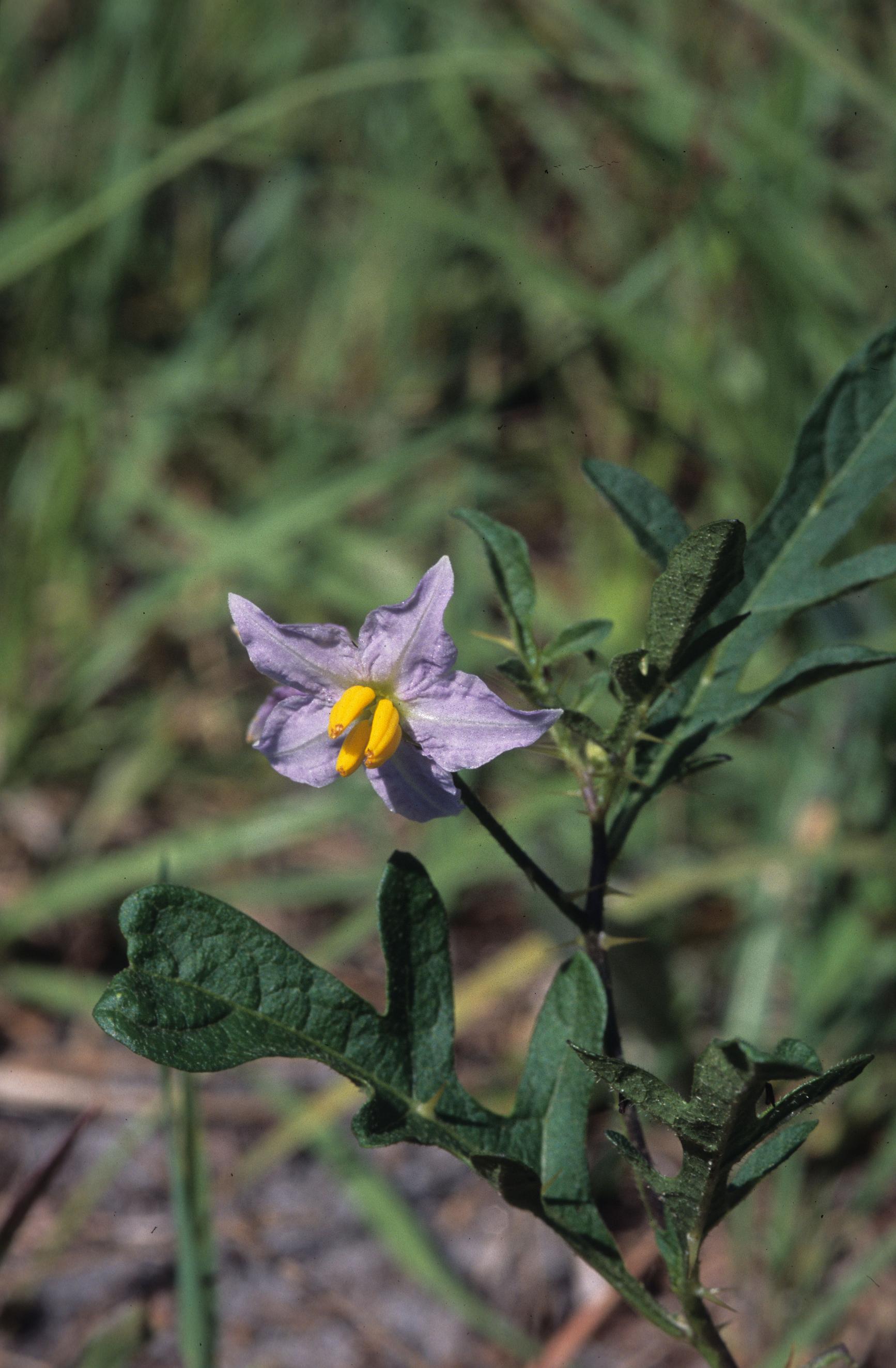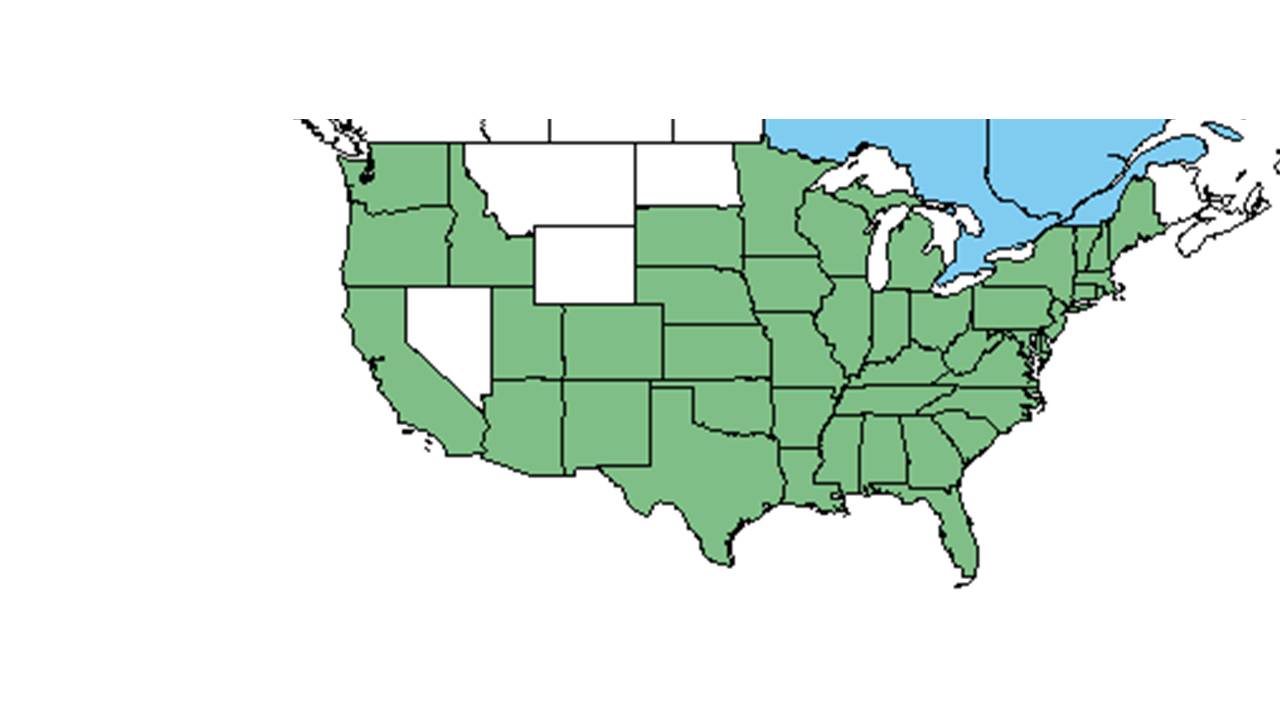Solanum carolinense
| Solanum carolinense | |
|---|---|

| |
| Photo was taken by Gil Nelson | |
| Scientific classification | |
| Kingdom: | Plantae |
| Division: | Magnoliophyta – Flowering plants |
| Class: | Magnoliopsida – Dicotyledons |
| Order: | Solanales |
| Family: | Solanaceae |
| Genus: | Solanum |
| Species: | S. carolinense |
| Binomial name | |
| Solanum carolinense L. | |

| |
| Natural range of Solanum carolinense from USDA NRCS Plants Database. | |
Common name: Carolina horsenettle
Contents
Description
Distribution
Ecology
Habitat
It is associated with shallow, calcareous soils (Engle et al 2000).Squiers found that as the time of disturbance approached mid-summer, the average percent cover of S. carolinense showed a significant increase (Squiers 1989). It can be found in open fields (Squiers 1989). Was a plant species that provided the greatest canopy coverage on herbicide-treated plots during the first year following treatment (Madison et al 2001).
Phenology
Seed dispersal
Seed bank and germination
Fire ecology
Pollination
Use by animals
It is an important summer food for bobwhites (Jones and Chamberlain 2004).
Diseases and parasites
Conservation and Management
Cultivation and restoration
Photo Gallery
References and notes
Engle, D. M., M. W. Palmer, et al. (2000). "Influence of late season fire on early successional vegetation of an Oklahoma prairie." Journal of Vegetation Science 11: 135-144.
Jones, J. D. J. and M. J. Chamberlain (2004). "Efficacy of herbicides and fire to improve vegetative conditions for northern bobwhites in mature pine forests." Wildlife Society Bulletin 32: 1077-1084.
Madison, L. A., T. G. Barnes, et al. (2001). "Effectiveness of fire, disking, and herbicide to renovate tall fescue fields to northern bobwhite habitat." Wildlife Society Bulletin 29: 706-712.
Squiers, E. R. (1989). "The effects of seasonal timing of disturbance on species composition in a first-year oldfield." Bulletin of the Torrey Botanical Club 116: 356-363.